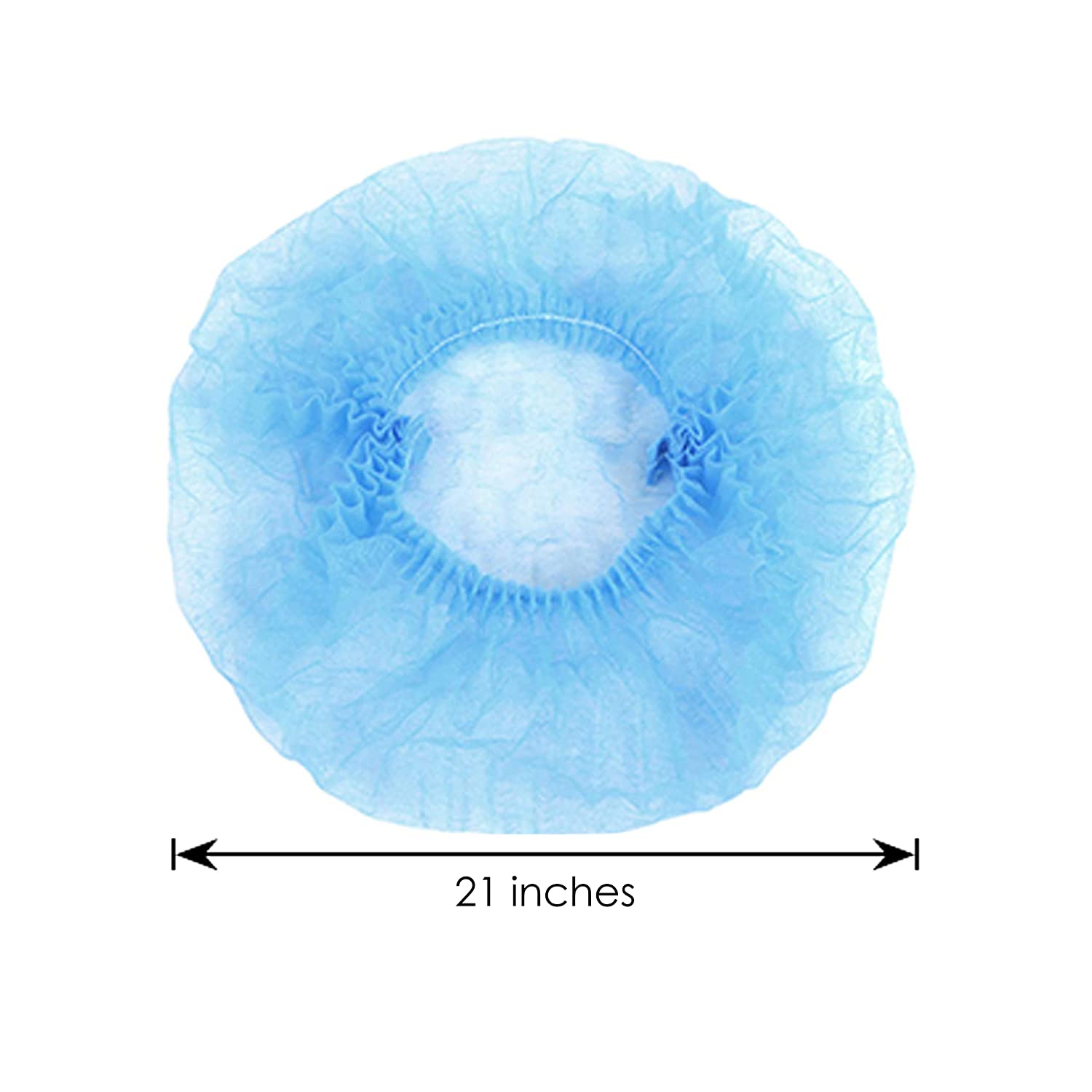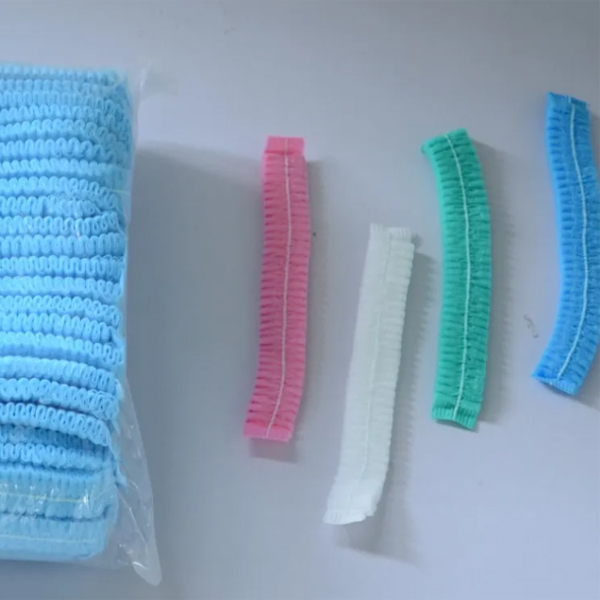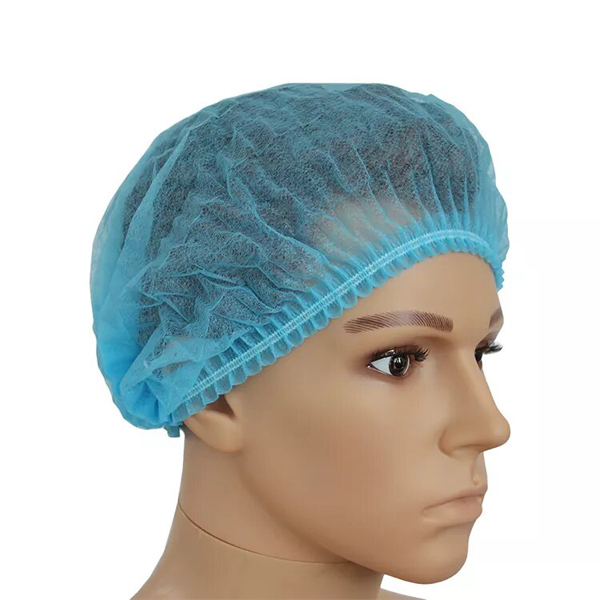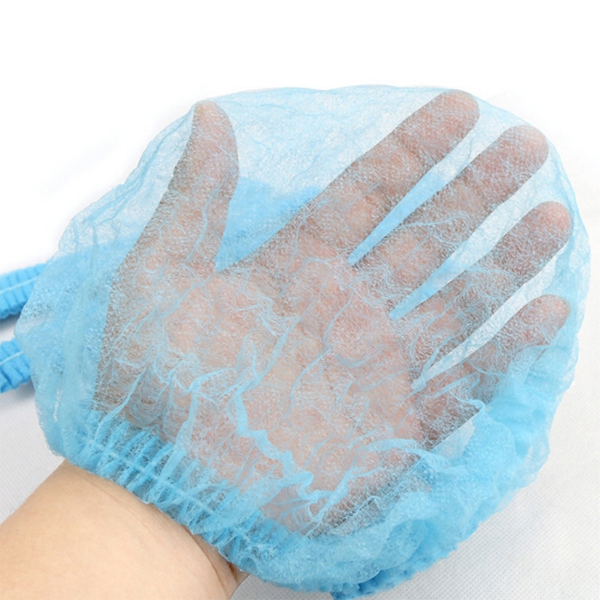In the high-stakes environment of an operating room, every detail matters. For procurement managers like Mark Thompson in the USA, sourcing the right medical supplies goes far beyond cost—it’s about safeguarding patient lives. The choice of a simple surgical cap might seem minor, but it’s a critical component of infection control. Is a traditional surgeon’s skull cap sufficient, or is a bouffant cap the superior choice? This debate has been a major topic in the surgical community for years. As a manufacturer of disposable medical consumables, my name is Allen, and from my factory in China, I’ve seen the trends and the research firsthand. This article will break down the differences between these types of headwear, explore the evidence behind the recommendations, and provide clear guidance to help you make the best purchasing decisions for your hospital or clinic, ensuring you can confidently operate while prioritizing patient safety.
What is the Primary Purpose of Wearing a Surgical Cap?
Before we dive into the different styles, it’s crucial to understand why a surgical cap is a non-negotiable piece of surgical attire. Its primary function is to act as a barrier. The human head is covered in hair, and our skin constantly sheds microscopic particles, including bacteria, skin cells, and sweat. In the sterile field of an operating room, any of these particles could fall into the surgical site, potentially leading to a dangerous Surgical Site Infection (SSI). SSIs are a major concern in healthcare, leading to increased patient suffering, longer hospital stays, and higher costs.
The surgical cap is designed to contain these potential contaminants. By covering the hair and scalp of every individual in the operating room—from the lead surgeon to the circulating nurse—the cap helps maintain a clean and sterile environment. It’s a fundamental tool of infection control. The goal is to prevent hair and other particles from contaminating the sterile instruments, the surgical field, and, most importantly, the patient. A properly worn surgical cap is a simple yet powerful way to reduce the risk of infection and improve patient outcomes.
What are the Main Types of Surgical Caps Available?
While there are many variations, the discussion around surgical headwear almost always comes down to two main styles: the bouffant cap and the skull cap. Each has its proponents and a distinct design that affects its functionality. Understanding the significant differences is key to making an informed choice for your medical setting.
The bouffant cap is a loose, puffy cap with an elastic edge that gathers around the hairline. Its design allows it to easily accommodate all hair lengths and styles, from very short hair to long, voluminous hair. They are typically disposable, made from lightweight, breathable non-woven materials. On the other hand, the skull cap (often called a surgeon’s hat or scrub cap) is a more form-fitting cap that ties in the back. These skull caps are often made of cloth, like cotton, and can be reusable. They are traditionally favored by many surgeons for their comfort and personalized fit. The choice between these two styles of hat has become a central point of discussion in modern surgical practice.

The Great Debate: Bouffant vs. Skull Cap – What Does the Evidence Say?
The bouffant vs. skull cap debate isn’t just about aesthetics or tradition; it’s rooted in evidence-based practice and the quest to minimize SSIs. The controversy ignited when the Association of periOperative Registered Nurses (AORN) updated its guidelines. For years, the choice of surgical cap was a matter of personal preference. However, as the focus on infection prevention intensified, researchers and organizations began to scrutinize every aspect of operating room attire.
The core of the argument is coverage. Studies have suggested that skull caps may not fully contain all the hair at the sides of the head (sideburns) or the nape of the neck, especially on individuals with long hair. This led to concerns that stray hairs and shed skin particles could escape and contaminate the surgical area. The bouffant cap, with its gathered elastic and larger volume, was proposed as a more effective solution for total hair containment. This shift in thinking, backed by organizational recommendations, forced hospitals and surgical teams to re-evaluate their long-standing practices regarding which surgical cap to wear.
| Feature | Bouffant Cap | Skull Cap (Scrub Cap) |
|---|---|---|
| Coverage | Provides full coverage of all hair, including the periphery and nape of the neck. | May leave sideburns and hair at the nape of the neck exposed. |
| Material | Typically disposable, made of lightweight non-woven polypropylene. | Often made of reusable cloth (cotton, polyester blend). |
| Fit | Elastic band for a one-size-fits-most design. Accommodates all hair lengths. | Tie-back design for a more customized, snug fit. Better for short hair. |
| AORN Stance | Previously recommended as the preferred option for better containment. | Considered less effective at total hair containment by the AORN guideline. |
| User Base | Widely used by all operating room personnel, including nurses and techs. | Traditionally preferred by surgeons for comfort and tradition. |
Why Did AORN Recommend the Bouffant Cap for the Operating Room?
The AORN‘s recommendation in its "Guideline for Surgical Attire" was a pivotal moment in the surgical cap debate. The organization, which sets standards for perioperative nursing practice, based its guideline on the principle of comprehensive containment. The rationale was simple: if the purpose of a surgical cap is to prevent hair and skin particles from entering the surgical site, then the cap should cover all of the hair and scalp. The AORN pointed to studies indicating that the bouffant cap style was more effective at achieving this goal.
The AORN guideline stated that the mouth, nose, and hair should be covered. They argued that bouffant hats are superior because the elasticated design creates a more secure seal around the entire hairline. From my perspective as a manufacturer, we saw a dramatic increase in orders for disposable medical hair caps following this recommendation. Hospitals across North America and Europe began updating their policies to align with the AORN‘s evidence-based approach to infection prevention, making the disposable bouffant cap the new standard in many operating rooms. This shift was entirely driven by the commitment to enhance patient safety.

What are the Arguments for the Surgeon’s Skull Cap?
Despite the AORN recommendation, the skull cap has many staunch defenders, particularly among surgeons. The American College of Surgeons pushed back, arguing that there was not enough definitive evidence to prove that wearing a bouffant cap over a skull cap actually reduces infection rates. They contended that forcing surgeons who have worn skull caps for their entire careers to switch could be disruptive and that the focus should be on proper technique and overall sterile practice rather than just the style of hat.
Proponents of the skull cap also argue for its superior comfort and fit. The tie-back design allows the wearer to adjust it securely, which can prevent the cap from slipping during a long surgical procedure. Some find the bouffant cap‘s elastic band to be tight or irritating on the forehead over several hours. There’s also the element of tradition and professional identity. The cloth scrub cap, often in personalized patterns, is seen by some as part of the surgeon’s uniform. The core argument remains that as long as the wearer ensures all hair is contained within the cap, the style should not matter as much as the proper way you wear one.
How is the Best Surgical Cap Material Chosen?
The material of a surgical cap is just as important as its style, affecting comfort, breathability, and barrier effectiveness. The choice is primarily between disposable non-woven fabric and reusable cloth. Disposable bouffant caps are typically made from spun-bond polypropylene. This material is lightweight, breathable, and cost-effective. It effectively prevents particles from passing through while allowing heat and moisture to escape, keeping the wearer comfortable. As these caps are generally single-use, they also eliminate the need for laundering and the risk of cross-contamination that can come with reusable attire.
Reusable skull caps, on the other hand, are often made from cotton or a cotton-polyester blend. Cloth is praised for its comfort and softness. However, for a cloth cap to be effective, it must be laundered correctly after every use to ensure it is clean for the next operation. The weave of the fabric also matters; a tighter weave provides a better barrier. When sourcing caps, procurement managers must consider the trade-offs between the convenience and guaranteed cleanliness of a disposable head covering and the long-term cost and comfort of a reusable cloth cap. Many institutions now favor a fully disposable approach for all PPE, including protective isolation gowns, to simplify infection control protocols.

Who is Required to Wear a Surgical Cap in the Operating Room?
The rule for surgical headwear in a restricted operating room setting is simple: everyone. This policy is essential to maintain a sterile environment. Every single person who enters the room during a surgical procedure must wear a surgical cap that completely covers their hair. This includes the entire surgical team.
- Surgeons and Surgical Assistants
- Anesthesiologists and Anesthesia Techs
- Scrub Nurses and Technologists
- Circulating Nurses
- Medical Students and Observers
- Medical Device Representatives
The policy is universal because anyone in the room has the potential to shed particles that could compromise the sterile field. There are no exceptions. The goal is to create a complete barrier, and that requires 100% compliance from all personnel. Having a ready supply of high-quality disposable surgical caps makes it easy to enforce this policy for all visitors and team members.
How Do You Properly Wear a Surgical Cap to Ensure Maximum Protection?
Choosing the right surgical cap is only half the battle; wearing it correctly is what truly makes it effective. An improperly worn cap provides a false sense of security and fails at its primary job. Medical professionals are trained to follow a specific protocol to ensure their hair is fully contained before they operate.
First, all hair must be gathered and tucked inside the cap. For those with long hair, it should be tied back first before putting on the cap. The edge of the cap, whether it’s the elastic of a bouffant or the edge of a skull cap, should sit on the forehead and cover the hairline completely. It must also extend down to cover the ears and the nape of the neck. There should be no stray hairs peeking out from the sides or back. The cap should feel snug but not uncomfortably tight. For skull caps, the ties should be fastened securely in the back. This meticulous attention to covering is what makes the surgical cap a reliable tool for infection control.

What Should a Procurement Manager Look for in a Disposable Surgical Cap Supplier?
As a procurement manager, your choice of supplier for something as seemingly simple as a surgical cap has a real impact on your organization’s clinical performance and budget. When evaluating suppliers of Non-Woven Polypropylene Fabric Disposable Caps, there are several key factors to consider. First and foremost is quality and compliance. Ensure the supplier adheres to international standards like ISO 13485. The material should be of medical grade—strong enough to not tear easily but also breathable and comfortable for the wearer.
Beyond the product itself, evaluate the supplier’s reliability. Can they handle bulk orders and meet your delivery timelines? At my company, we run seven production lines to ensure we can meet the high demand from our clients in North America and Europe without delays. Ask about the cap‘s design. Does the bouffant cap have a strong, non-latex elastic band? Is the sizing adequate to fit a variety of head sizes and hair volumes? A good partner will be transparent about their manufacturing process and provide all necessary documentation, giving you confidence that you are purchasing a safe, effective, and high-quality surgical cap.
Is There a Final Verdict in the Surgical Hat Debate?
After years of discussion and multiple studies, the debate over the best surgical cap has settled into a place of educated compromise. The AORN has since updated its guidelines to be less prescriptive, removing the explicit recommendation for bouffant caps. The current focus, supported by organizations like the American College of Surgeons, is on complete hair containment, regardless of the style of cap. The final guideline emphasizes that the chosen head covering must cover all hair and scalp skin.
This means the responsibility now lies with the individual healthcare worker and the hospital. The most important factor is not whether you wear a bouffant or a skull cap, but that you wear it correctly. For institutions, this means providing options and clear policies. Many hospitals now require individuals wearing skull caps to also wear a disposable bouffant cap over it to ensure full coverage, blending both tradition and safety. Ultimately, the goal that unites everyone—surgeons, nurses, and manufacturers—is positive patient outcome. The humble surgical cap plays a vital role in achieving that.
Key Takeaways
- Primary Goal: The main purpose of a surgical cap is infection control by containing hair, skin cells, and other potential contaminants from the surgical site.
- Two Main Styles: The primary choices are the bouffant cap, known for its full coverage, and the traditional skull cap, favored for its snug fit and comfort.
- The Debate is About Coverage: The AORN initially recommended the bouffant cap for its superior ability to contain all hair, though guidelines now focus on full containment regardless of style.
- Proper Wear is Crucial: The most effective cap is one that is worn correctly, covering the entire hairline, ears, and nape of the neck with no stray hairs visible.
- Everyone Wears One: All personnel entering a restricted operating room during a procedure must wear a surgical cap.
- Quality Sourcing Matters: When purchasing disposable surgical caps, look for suppliers with a commitment to quality materials, regulatory compliance, and reliable production capacity.
Post time: Sep-23-2025





